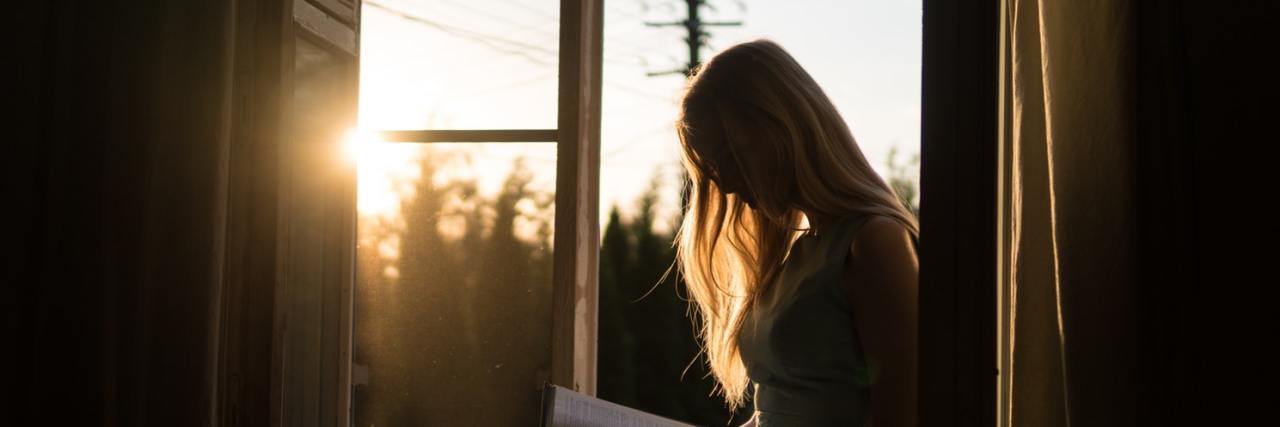Why This OCD Memoir Is a Must-Read
Editor's Note
If you struggle with obsessive-compulsive disorder (OCD), the following post could be potentially triggering. You can contact the Crisis Text Line by texting “START” to 741-741. To find help, visit the International OCD Foundation’s website.
I’m a reader. I always have been ever since I was little. I read everything that I could get my hands on, always hungry for more. On my journey through multiple mental health diagnoses, reading has been one of the things that’s helped me the most. Reading others’ stories of both trials and successes have always helped me feel less alone. It also helped me add tools and strategies to my ever-growing mental health toolkit.
When Shala Nicely’s memoir, “Is Fred in the Refrigerator?” was released, I immediately downloaded the Kindle version and started reading, finishing the last page about 24 hours later. I rarely refer to memoirs as page-turners, but there was something about this book that left me unable to put it down. Maybe it was Shala’s refreshing honesty and painstaking attention to detail. Or maybe it was my ability to relate to some of the experiences she described, and my eagerness to learn about her recovery journey. At times I found it emotional and would be lying if I said that there were no tears shed as I was reading. But ultimately, I was left feeling inspired and grateful — grateful that Shala decided to break her obsessive compulsive disorder‘s “Rule #1” in order to share her story with the world.
Throughout the memoir, Shala shares many anecdotes about living with a “monster” inside her head. These stories progress from early childhood to present day, and encompass memories from before, during and after she was diagnosed with OCD. Her journey is not a straight path to recovery (very few mental health-related journeys are) and certainly has not been without struggle and hardship. Through her writing, Shala takes the reader on that journey: from childhood to college to her career in sales and marketing, and eventually to her decision to become a therapist and advocate for others with OCD. Shala also shares her difficult experience with finding and receiving effective treatment for OCD, and the difference that learning and practicing Exposure and Response Prevention (ERP) made in her recovery.
Shala describes her OCD as her “monster” throughout the book, personifying her disorder in such a way that readers are able to gain a greater understanding of what goes on in the mind of someone with OCD. Even more importantly, this personification emphasizes that Shala and her disease are separate entities. Often with mental illness, it is easy to let our disorders define who we think we are and at times, the “monsters” seems to consume us. But it’s important to distinguish between the disorder and the person. In the case of OCD, it’s important to remember the intrusive thoughts and urges are just the OCD talking. We can all talk back to our “monsters,” and Shala does just that throughout her stories by using her strength, courage and even a bit of humor.
Shala also shares a number of lessons she’s learned while battling her OCD. One of my favorite lessons is that OCD is not about content. Shala first learned this from Dr. Reid Wilson who explained to her and other patients that content is what OCD makes up to scare you. Content is the topic of your intrusive thoughts and obsessions. But OCD is not really about specific thoughts and fears; it’s about a larger feeling of uncertainty. It’s about the fear of not knowing whether something bad might happen. Even though the content of my own obsessions differs from the obsessions that Shala describes, I found that I could still relate to her in a lot of ways. While OCD can take many forms, uncertainty always remains at it’s core. Realizing that OCD is not about content is an important part of recovery.
Other lessons and strategies that Shala describes include seeking out anxiety and discomfort, looking at uncomfortable situations as opportunities to practice dealing with doubt and uncertainty, adjusting attitude and body language (her “shoulders back” strategy was another of my favorites), and incorporating mindfulness practices. While I’d previously heard and read about a few of the principles Shala described, I felt that she brought a fresh and unique perspective from her own experiences using these strategies. After finishing the book, I was left with a broadened perspective toward dealing with my own OCD and an abundance of new strategies I could add to my OCD toolbox.
In my opinion, one of the most memorable points that Shala made in her book is that she is still recovering and that even now, her attempts to manage her OCD are not always perfect. This is what brought me the most comfort as I read her story. Since there is no “cure” for OCD, there is no endpoint or final destination where a person can say they’re completely recovered. Sometimes things can still become messy. The past week has been incredibly hard for me, despite feeling like I’d previously had things under control.
Reading Shala’s story reminded me of two important things:
- I am not alone.
- It’s OK to be imperfect; recovery is an ongoing journey.
Whether you have OCD yourself, know a friend or family member who does or simply want to learn more about the disorder, Shala’s memoir is a must-read. Engaging, emotional, honest and informative: this book checks all the boxes. I cannot recommend it highly enough!
Unsplash via Yuri Efremov

